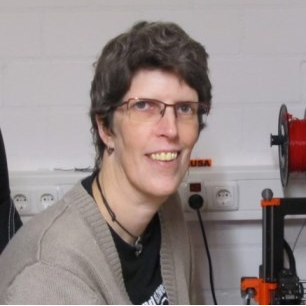Editorial Board Members' Collection Series: Recent Developments in Electrospinning
A special issue of Polymers (ISSN 2073-4360). This special issue belongs to the section "Polymer Applications".
Deadline for manuscript submissions: closed (20 May 2024) | Viewed by 11543
Special Issue Editors
Interests: biopolymers; electrospinning; magnetism; spintronics; optics; dye-sensitized solar cells (DSSCs); smart textiles
Special Issues, Collections and Topics in MDPI journals
2. Head of the Analytical Chemistry Department, Almazov National Medical Research Centre, St. Petersburg, Russia
Interests: polysaccharides; biomaterials; tissue engineering; drug delivery; gene delivery; nanomedicine; nanocomposites; electrospinning
Special Issues, Collections and Topics in MDPI journals
Interests: microfluidic; tissue regeneration; tissue engineering; biomaterials
Special Issues, Collections and Topics in MDPI journals
Interests: bio-based and biodegradable polymers; green composites; polymerization of biopolymers; processing of bioplastics; nanofibers obtained by electrospinning; sustainable polymer technologies for food preservation; controlled release of active compounds in plastic formulations; biopolymers for food packaging; bioeconomy; circular economy
Special Issues, Collections and Topics in MDPI journals
Interests: biodegradable polymers; transport phenomena; electrospun fibers; controlled release; polymer blends; composites; water in macromolecular systems; sorption; gas permeability
Special Issues, Collections and Topics in MDPI journals
Special Issue Information
Dear Colleagues,
The Special Issue "Editorial Board Members' Collection Series: Recent Developments in Electrospinning" is triggered by the growing interest in the development, fabrication, and application of electrospinning materials in various fields, including tissue engineering, regenerative medicine, wound healing, drug and gene delivery, cosmetics, packaging, textile manufacturing, filtration, environmental remediation, catalysis, among others. The aim of this Special Issue is to provide broad coverage of research progress as well as current literature reviews on fundamental and applied aspects of electrospinning for various applications.
We invite active experts to participate in discussions on improvements in electrospinning technologies and innovations in electrospun polymers and polymeric composites. We hope that this Special Issue will provide a unique platform for disseminating new concepts and applications of electrospinning toward inspiring and motivating further research in this exciting field.
Prof. Dr. Andrea Ehrmann
Dr. Yury A. Skorik
Dr. Francesco Lopresti
Prof. Dr. Sergio Torres-Giner
Prof. Dr. Alexey L. Iordanskii
Guest Editors
Manuscript Submission Information
Manuscripts should be submitted online at www.mdpi.com by registering and logging in to this website. Once you are registered, click here to go to the submission form. Manuscripts can be submitted until the deadline. All submissions that pass pre-check are peer-reviewed. Accepted papers will be published continuously in the journal (as soon as accepted) and will be listed together on the special issue website. Research articles, review articles as well as short communications are invited. For planned papers, a title and short abstract (about 100 words) can be sent to the Editorial Office for announcement on this website.
Submitted manuscripts should not have been published previously, nor be under consideration for publication elsewhere (except conference proceedings papers). All manuscripts are thoroughly refereed through a single-blind peer-review process. A guide for authors and other relevant information for submission of manuscripts is available on the Instructions for Authors page. Polymers is an international peer-reviewed open access semimonthly journal published by MDPI.
Please visit the Instructions for Authors page before submitting a manuscript. The Article Processing Charge (APC) for publication in this open access journal is 2700 CHF (Swiss Francs). Submitted papers should be well formatted and use good English. Authors may use MDPI's English editing service prior to publication or during author revisions.
Keywords
- electrospinning process design
- electrospun materials
- nanomaterials
- ultrathin materials
- tissue engineering
- regenerative medicine
- drug and gene delivery
- wound healing
- environmental remediation
- filtration
- enzyme immobilization
- catalysis
- packaging
- cosmetics
- non-woven textile
Benefits of Publishing in a Special Issue
- Ease of navigation: Grouping papers by topic helps scholars navigate broad scope journals more efficiently.
- Greater discoverability: Special Issues support the reach and impact of scientific research. Articles in Special Issues are more discoverable and cited more frequently.
- Expansion of research network: Special Issues facilitate connections among authors, fostering scientific collaborations.
- External promotion: Articles in Special Issues are often promoted through the journal's social media, increasing their visibility.
- Reprint: MDPI Books provides the opportunity to republish successful Special Issues in book format, both online and in print.
Further information on MDPI's Special Issue policies can be found here.










